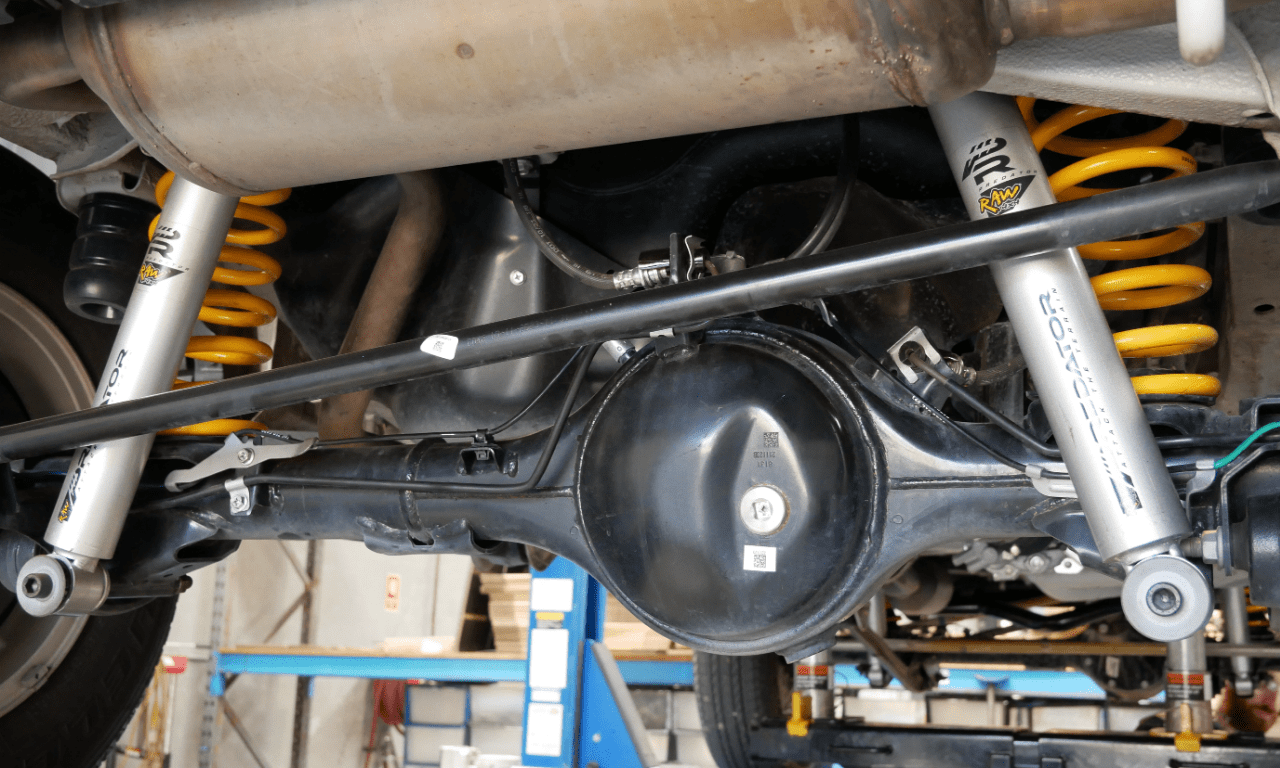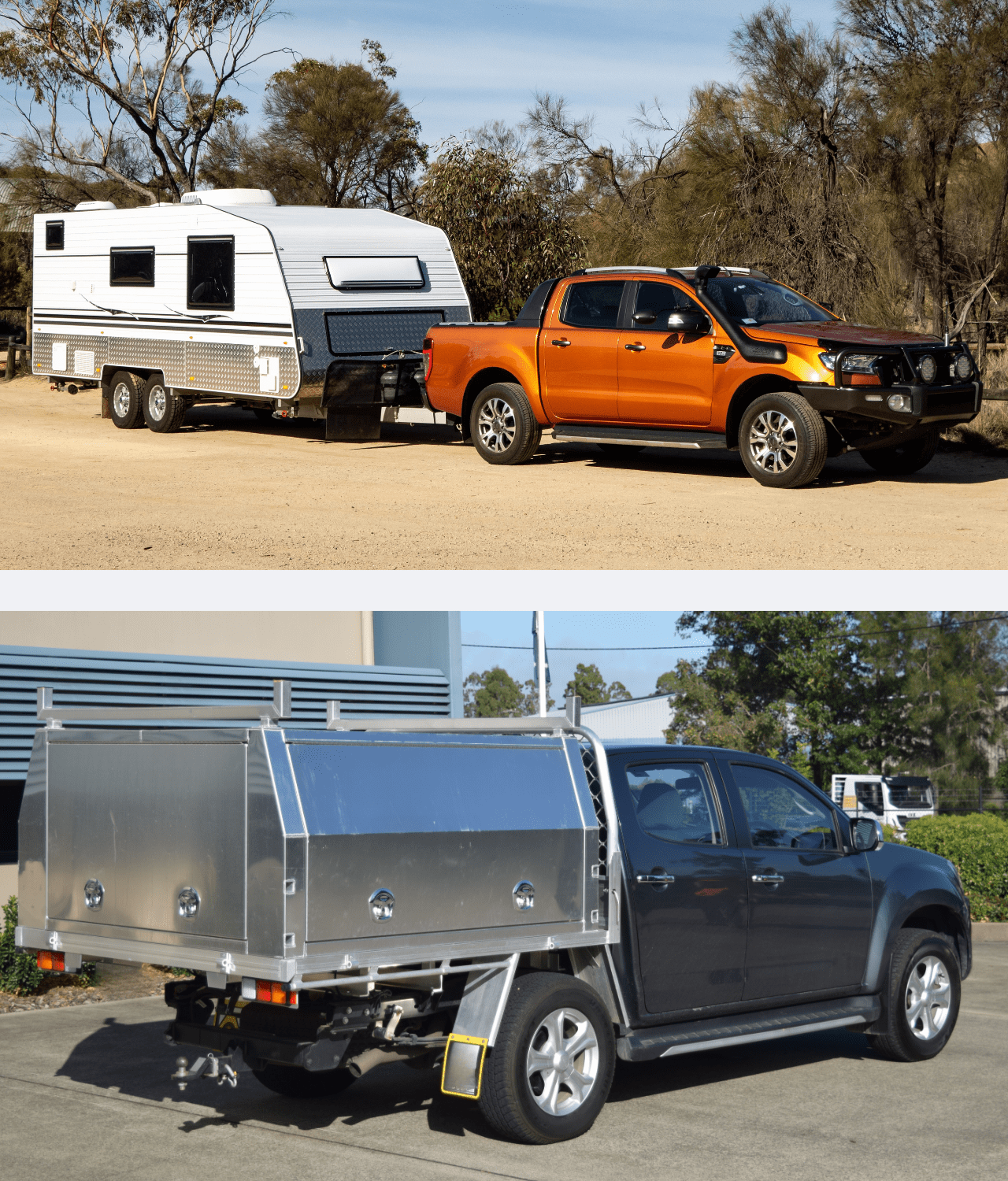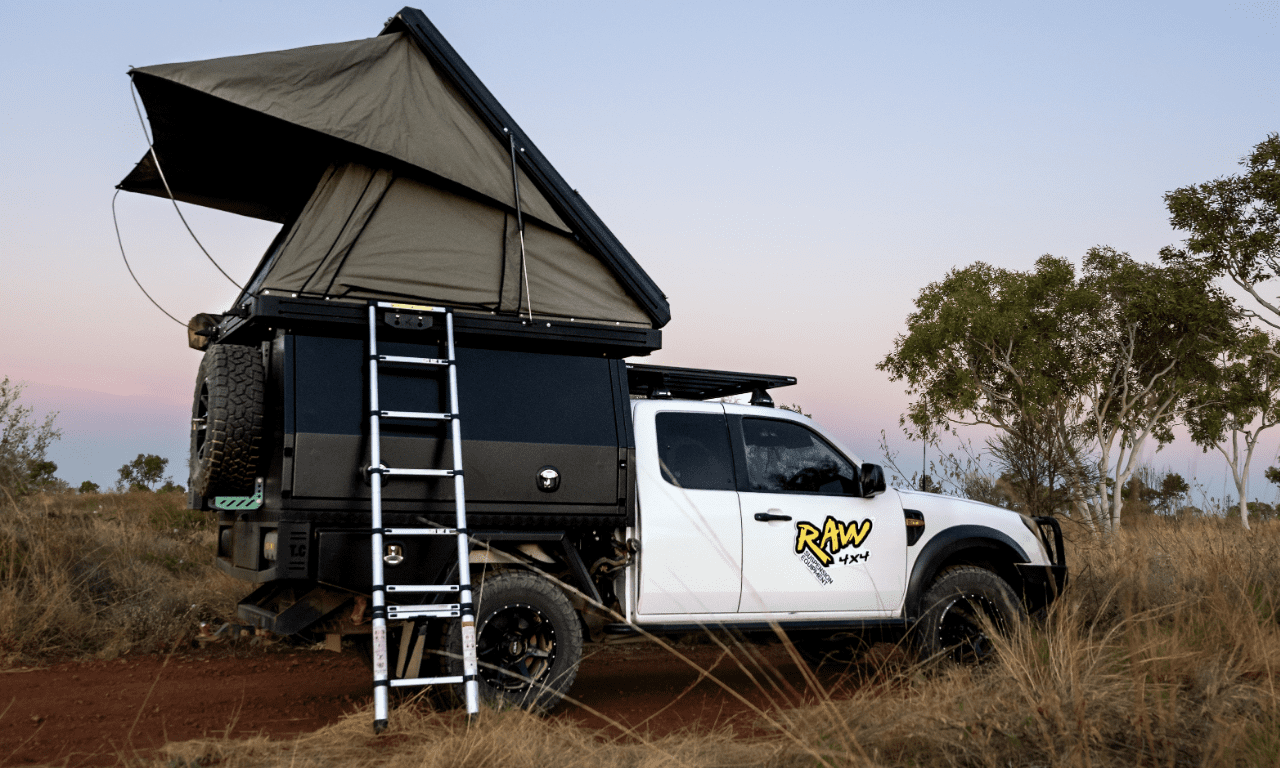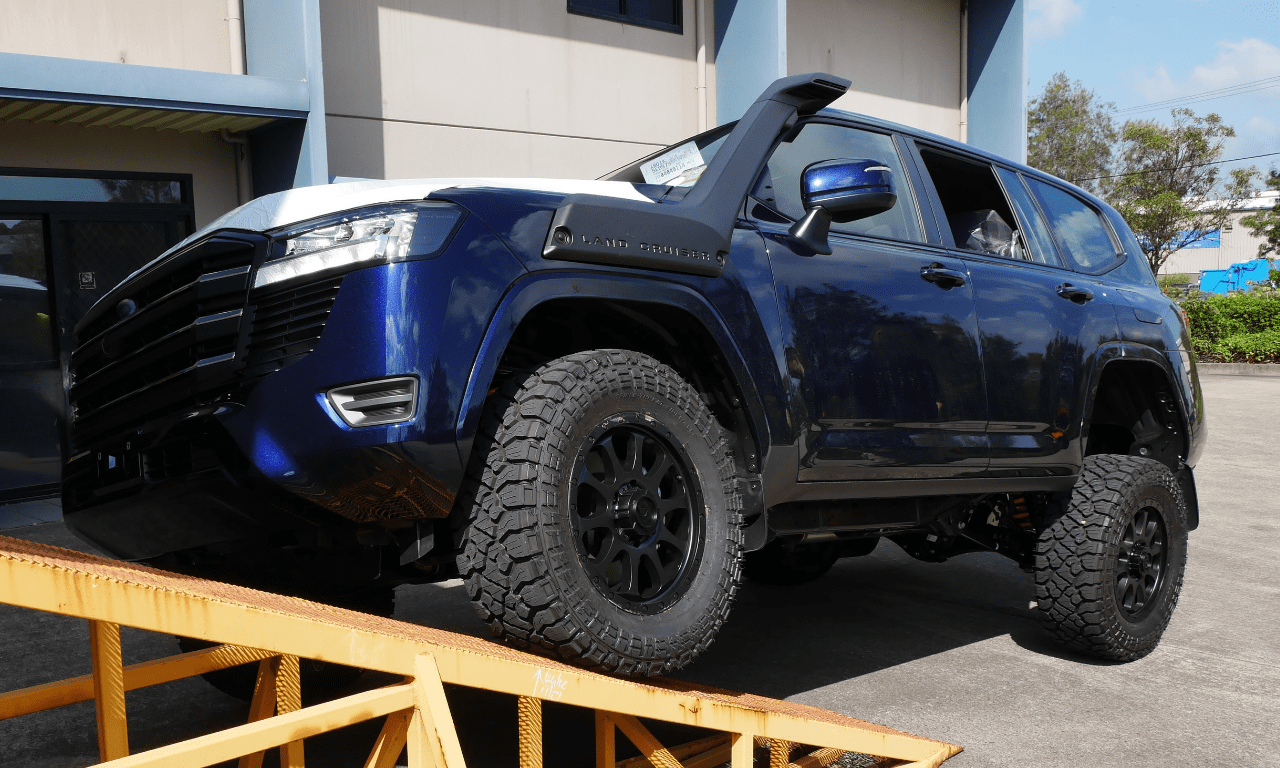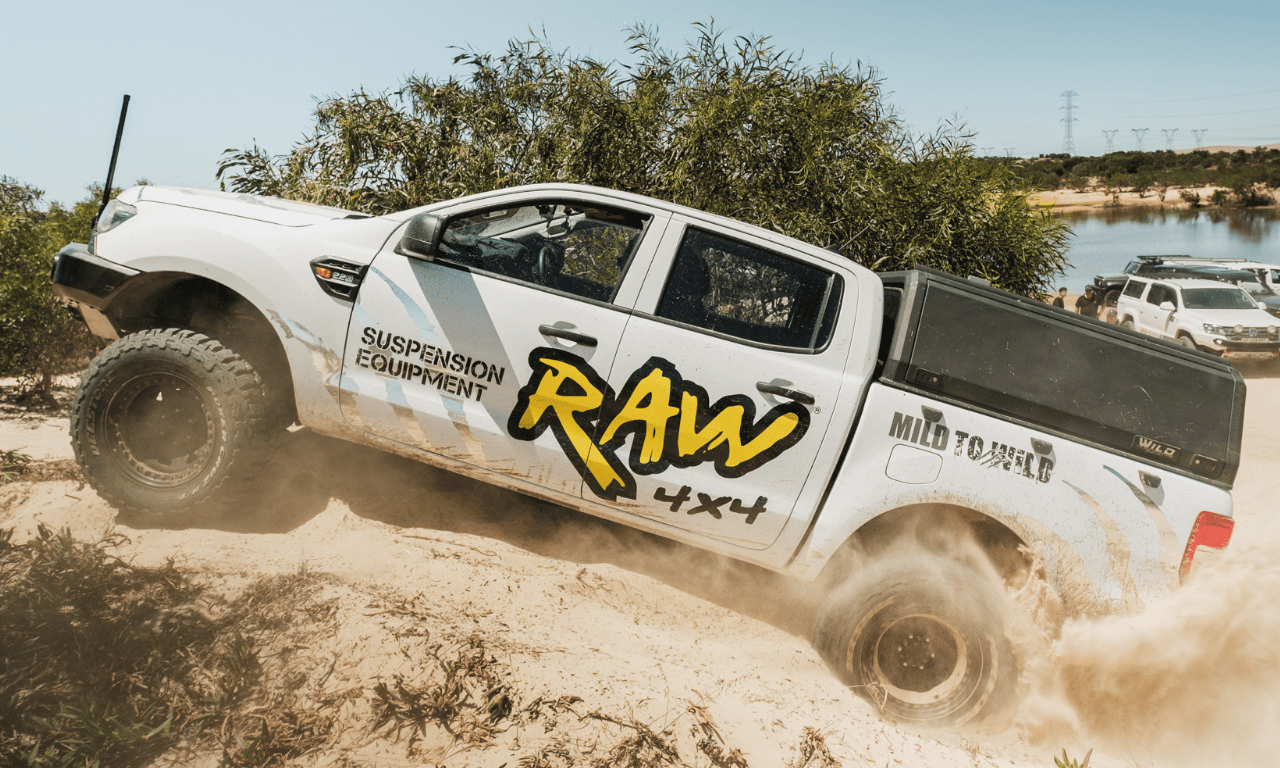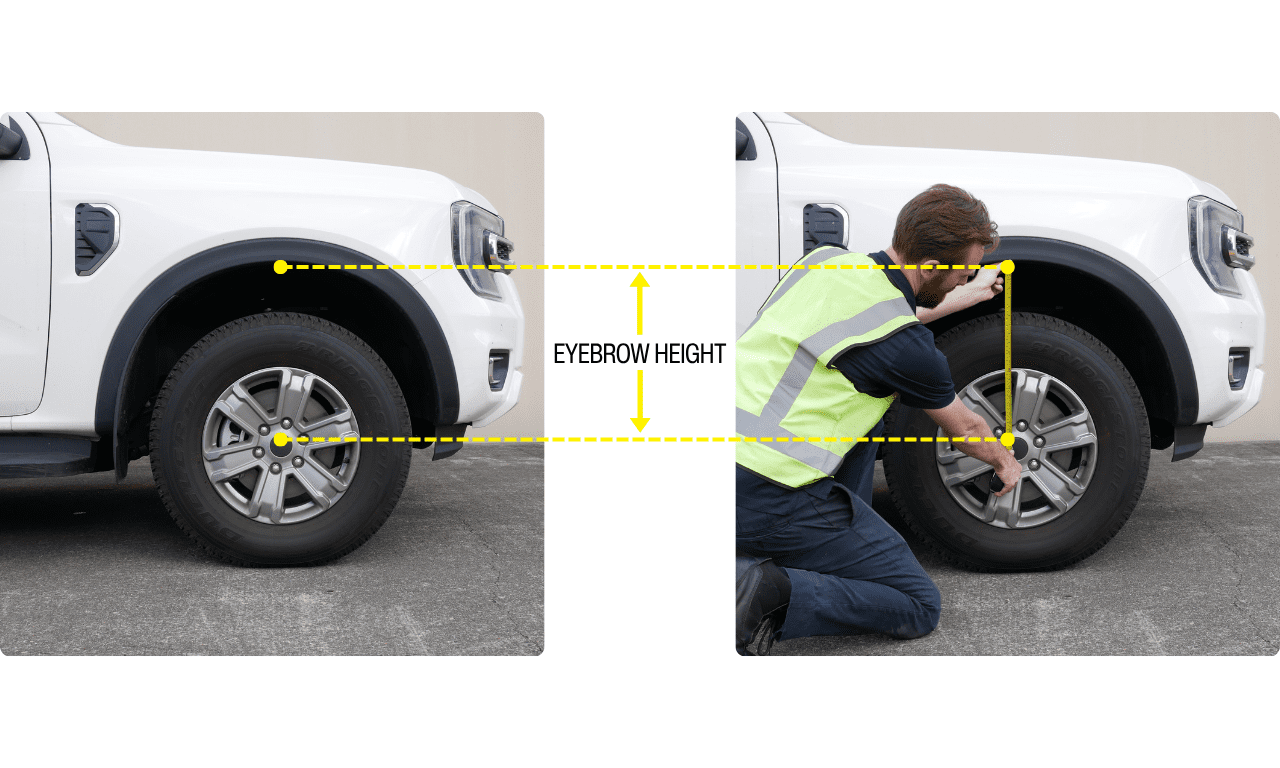Q: How should I set up my suspension?
A: The best advice that we can give is to set your 4×4 up for what you are going to use it for 80% of the time. It’s all about compromise and getting a kit that suits the main purpose of the vehicle.
Installing a heavy duty suspension kit for a once off trip will make the ride of your vehicle very hard when it is not loaded and sit too high which can have a negative effect on other suspension components.
Towing
If you are towing a caravan or a boat trailer occasionally, an air bag set up is a better compromise than specing up extra heavy duty coils. Otherwise you can expect a harsh ride and have your vehicle sit high in the rear when the trailer is not hitched.
Tradie
In the case of mining or tradesman vehicles a heavy duty set up is better suited for a constant load. If the factory tub has been replaced by a steel or alloy tray, take this weight factor into account when adding up the kilos in tool boxes, tools and equipment.
On utes, such as the Toyota Landcruiser 79 series, RAW 4×4 have multiple load rated springs to best suit your load carrying requirements.
